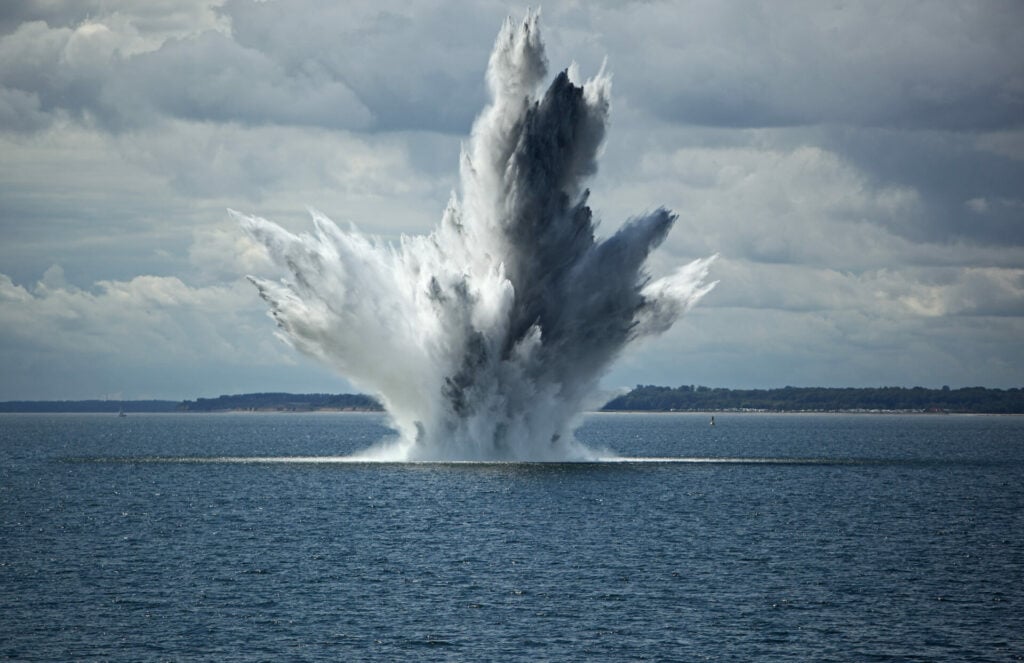For two days between July 27 and 29 in 2022 parts of the UAE were pounded by torrential rain. The flash floods that ensued killed seven people – including five migrant workers – and forced almost 4,000 people to evacuate. Fujairah and Sharjah were among the worst hit in the Middle East.
One migrant Pakistani worker said: ‘At first, we were enjoying the rain – but it got dangerous quickly. I live on the ground floor and water started coming inside. That was scary.’

While the UAE is no stranger to sudden heavy bursts of rain, an official from the Emirates’ National Centre of Meteorology admitted that climate change could be one of the reasons behind the increased frequency of the region’s catastrophic downpours.
Some reports even suggest the region is heating up at almost twice the global average, with the temperature predicted to be 5°C hotter by the end of the century
The grim truth is that the Middle East has been hard hit by changes to global weather systems for many years now. Some reports even suggest that the region is warming not just a little bit more rapidly than the rest of the world but is heating up at almost twice the global average, with the temperature predicted to indicate an overall warming of up to 5°C for the remainder of the century.
Catastrophic Dust Storms

Last year’s flash floods weren’t the only evidence of changing meteorological conditions in the Middle East. Other reports spanning the region cover apocalyptic stories about drought, wildfires, rising sea levels and more.
Just a month before the UAE flash floods, large swathes of the Middle East were affected by dust storms so intense that more than 1,200 people were hospitalised in Saudi Arabia, airports were closed and three Kuwaiti ports were shut down.
Quoted in Al Jazeera, Banafsheh Keynoush, a foreign affairs scholar and a fellow at the International Institute for Iranian Studies, said that ‘climate change causes the storms, and the storms exacerbate the impacts of climate change,’ referring to the fact that solar panels designed to create electricity can’t function properly when coated in sandstorm dust.
Worse still, Al Jazeera noted that ‘environmental crises related to low rainfall, drought and declining river levels can serve to heighten tensions between countries.’
Alarmingly, the World Resources Institute states that the Middle East is home to 12 of the world’s 17 most ‘water-stressed countries’.
A Geographical Issue
The problem, in many ways, is a geographical one. The Middle East is, of course, an arid region, and climate change is making it even dryer. The resultant strain on water resources impacts everything from agriculture to manufacturing, sanitation and, as noted above, international relations.
But with temperatures in the region set to increase by as much as 5 degrees Celsius by 2100, the Middle East is not simply an unfortunate victim of global events and its dry landscape. Actions within the region are also partly to blame.
Regional and international governments, multilateral institutions and the private sector should increase funding for climate-related research in the Middle East, which currently pales in comparison to the resources awarded to institutions in the West
A study by researchers in Cyprus and Germany published in 2022 in the Review of Geophysics confirmed that the region’s scarcity of water made it more vulnerable than others to climate change – but added that greenhouse gas emissions in the Middle East were also part of the problem.
Talking to the Washington Post, Georgios Zittis – one of the report’s authors – said that ‘in the EU, we are seeing a declining trend of emissions, but this is not the case for the Middle East.’ The need to move away from fossil fuels in the region at a faster pace, the report says, is imperative.
Ambitious Goals
The good news is that none of this is lost on many Middle Eastern nations. A snapshot of their activities suggests that numerous countries are taking the region’s troubling situation incredibly seriously. Highlights include:

The UAE: a goal has been set to reduce carbon emissions by 31 per cent in the next seven years.
Saudi Arabia: the government is investing $100 billion in renewable energy by 2030.
Qatar: recently established a Ministry of Environment and Climate Change. Among the ministry’s many initiatives, it is currently working with the Mitsubishi Research Institute in Japan on a study of carbon credits, with the ultimate aim of reducing greenhouse gas emissions.
Jordan: now working on an updated National Climate Change Policy and aiming for carbon neutrality by 2050. Already, more than 20 per cent of electricity in the country is being generated through wind or solar energy.
Oman and Lebanon: both have announced a target of being net zero by 2050 (as has the UAE).
More, says noted US think-tank Brookings, can be done: ‘Regional and international governments, multilateral institutions and the private sector should increase funding for climate-related research in the region, which currently pales in comparison to the resources awarded to institutions in the West,’ they state.
Greener Strategy
As Brookings notes, the private sector has its part to play in tackling the climate emergency. It’s a scenario in which everyone wins, as a recent PwC report points out. ‘Reorienting local economies to become greener and developing the critical capabilities to help the world address climate change will have not just economic benefits, but can position the region as a new global green hub,’ they note.
It will also make it a more attractive option for people who are considering the best and worst places to live as we all deal with the climate crisis.
‘We all have an important role to play in addressing this global issue, as it affects not only the environment, ecology and biodiversity of our planet but also the natural resources available for future generations’
Nawal Al-Hosany, UAE’s representative, International Renewable Energy Agency
Across the Middle East, innovative businesses are rising to the challenge, and some of the best will be showcased at this year’s Sustainability Innovation Awards in Dubai on August 31, 2023, at Sofitel Dubai The Palm. Categories cover everything from Sustainable Construction Projects to Clean Energy Initiatives.
Alongside this, many major companies in the Middle East – including Etihad Airways and Saudi Aramco – have taken concrete steps to reduce emissions, scale-up low carbon technologies or increase renewables. It’s a promising start, though the World Economic Forum says the rest of the Middle East needs to catch up.
Nawal Al-Hosany, the UAE’s permanent representative to the International Renewable Energy Agency (IRENA), is realistic about the challenges ahead.
She recently told Arab News: ‘We all have an important role to play in addressing this global issue, as it affects not only the environment, ecology and biodiversity of our planet but also the natural resources available for future generations.’
It’s now time for everyone in the Middle East to start doing their bit before the situation reaches boiling point.









